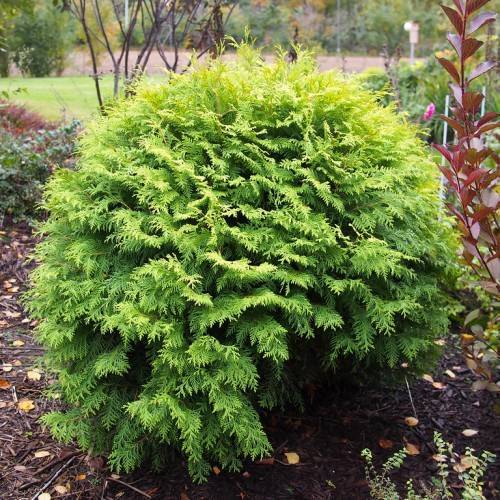
American arborvitae
Thuja occidentalis 'Bobozam' MR. BOWLING BALL
Cycle:
Perennial
Watering:
Frequent
Hardiness Zone:
2 - 7
Flowers:
Flowers In Spring
Sun:
Full sun, Part sun/part shade
Soil:
Sandy Loamy Clay Rocky
Cones:
Yes
Leaf:
Yes
Growth Rate:
Moderate
Maintenance:
Low
Drought Tolerant:
Yes
Care Level:
Moderate
watering
The American arborvitae (Thuja occidentalis 'Bobozam' MR. BOWLING BALL) is a low-maintenance evergreen shrub and requires minimal watering once established. Watering should be done deeply and periodically during the growing season, typically 2-3 times per month. In the spring and summer, give water to the root zone once per week until the top layer of soil is moist but not soaked. During the fall and winter, reduce watering and moisten the root zone about every 3 weeks or so when the top few inches of soil is dry. Too much water can easily lead to root or crown rot, which can kill your shrub.
sunlight
American arborvitae (Thuja occidentalis 'Bobozam' MR. BOWLING BALL) prefers full sun for the best growth and development. This means at least 6 to 8 hours of direct sunlight daily. Early morning sunlight is especially beneficial. If provided enough light, you can expect to see growth of up to 2 feet per year. In areas with moderate temperatures, arborvitae should not be exposed to intense afternoon sunlight. This could cause damage to this species in hotter climates.
pruning
American arborvitae (Thuja occidentalis 'Bobozam' MR. BOWLING BALL) is an evergreen tree best pruned in late winter or early spring, before new growth begins. Pruning should be done carefully and with caution, as pruning too much will reduce the overall health of this species. Generally, it is a good idea to prune no more than 10-15% of the total foliage. To achieve the desired look, removing older and diseased foliage, crossing branches, and removing excessive upward growth are typically recommended. Additionally, use caution when trimming the plant's shape, as it is prone to producing dense foliage if not pruned back enough.
